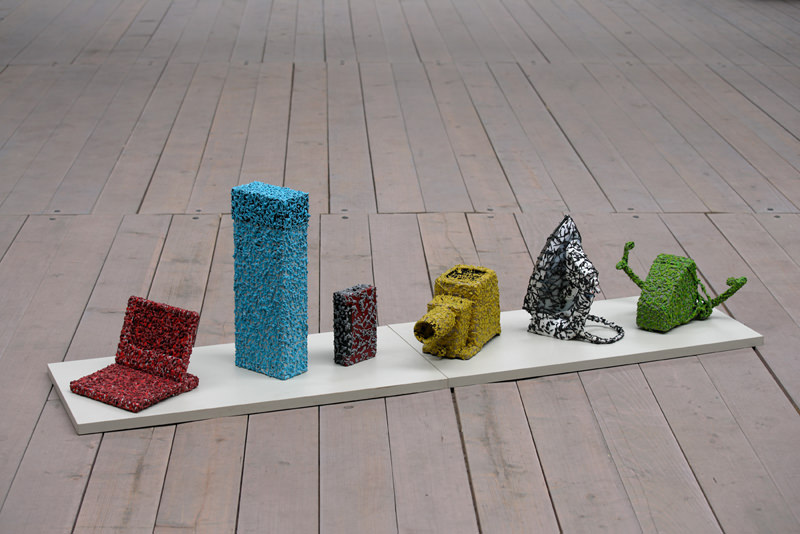Maria C. Holter
cross-painting
Text for catalogue 2008
For several years Barbara Höller has drawn attention to her work by making image carrier and paint her exclusive task, where different aspects of paint are scrutinized in isolation as colour, material and stylistic quality. Like in a chemical laboratory she tests colourants for their drying and coagulation qualities as well as for the optical and physical alterations that result from the interplay of the different bases and surfaces. Hardly ever is the paint brush, the most original tool of painting, employed. Höller swaps it for a drill, syringes and pipettes for the working of the picture bases. These themselves are also questioned permanently in their conventional function and form: Höller decided against canvasses as a projection surface as early as the 90s. She chose thin wooden panels “floating” freely in front of the wall for her increasingly geometrically abstract compositions that were derived from mathematical principles and also included the edge and reverse side of the picture. Since the series drill (2001) and process (2003-2005) she has started to injure the image carrier with circular drillings and to extend them to a sculptural, object-like dimension. So the MDF-boards with 1 cm deep drillings that contain coagulated acryllic paint could also be understood as reliefs finished in colour; however, the colour effect – a process-like alteration of the shades of colour to an optically extensive colour gradient – is so strong that Höller’s direct dealing with the medium of painting is unmistakable.
Since 2005 the collective term of one-liners comprises a multitude of still continuing test arrangements to isolate the paint entirely from the base. Consistently, these result in a kind of painting which has turned into trail and base at the same time – in so-called “cross-paintings”. In this, Höller applies acrylic paint with a syringe right onto glass plates, allows the coils and threads of paint to dry to such an extent that they are still elastic enough to be lifted and and brought into shape again. These spirals titled circular or helix can be attached to the wall as colour objects just like a painting or positioned directly onto the floor as an (RAUM)INSTALLATION object. In any case, the viewer succumbs to their colourful enticement, which projects the vision beyond matter into endlessness. Similar production principles are also applied for the cloths and rolls, where actual one-liners or webs of seemingly endless acrylic threads, develop.Still soft, they can be folded like a cloth, rolled up or draped over another shaping object. In addition to this cross-over between painting and sculpture, Höller has recently blurred the borders between “high” and “low” or art and everyday life. With a demand rendering homage to neo-pop she alienates objects of utility (radio, slide projector, iron …) and indulges in covering them entirely with wild sprinkles of striking colours, which emanate a herbaceous, grown quality from a distance. For a while, the paint turned into object leaves the stage to the colourfully paraphrased object.
Text for the catalogue »cross-painting« [3 Positionen] for thesame named exhibition art.room.Würth, Böheimkirchen (AT) im Sommer 2008
Maria C. Holter ist Kunsthistorikerin, Kuratorin und Vermittlerin und lebt in Wien.
